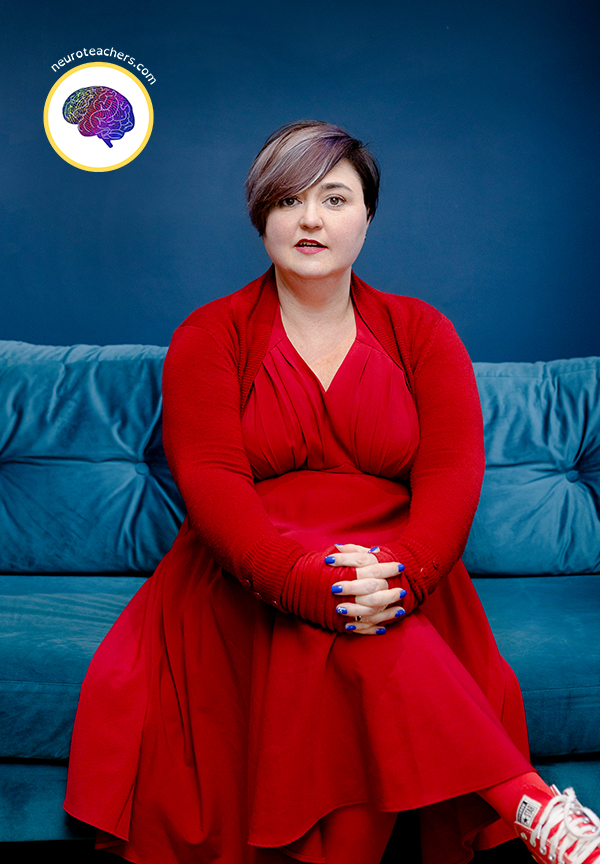Confessions of a recovering behaviourist
Catrina Lowri is a neurodivergent teacher, trainer, and coach. As well as having 22 years’ experience of working in education, she also speaks as a dyslexic and bipolar woman, who had her own unique journey through the education system
This is the second blog in the series called ‘ A controversial blog about behaviour.’ To find out more about my philosophy and how I came to it, you can read part 1 here https://www.neuroteachers.com/post/a-controversial-blog-about-behaviour-part-1
How I started my journey
Learning about behaviour has taken me from being a staunch behaviourist, through what some might now lovingly call ‘warm strict’. Then over the the years when I turned by back on mainstream ideas about behaviour because they didn’t work for the kinds of children I was supporting. Which is how I came to where I am today. Which is somewhere between trauma informed and relational practice. In this blog I’m going to tell you more about how I reached the conclusions I have, and why I left behaviourism behind.

What is behaviourism?
I’ll begin by defining behaviourism and how I came to it in the first place. The idea of this particular form of behaviour management comes from the work of B.F.Skinner, an American psychologist, who started his work in the 1930’s. He believed that behaviours
could be changed by conditioning and learnt from the environment. Skinner did not believe in free will. Originally, proponents of his teaching gave little regard to inherited factors or a learner’s experiences or family history, which they saw as irrelevant. This philosophy is
appealing to anyone who believes that behaviour is a choice because it offers a simple solution; apply strict conditioning through an environment of regimented sanction and rewards and you will get compliance.
How I became a behaviourist
This form of behaviour management was first introduced to me when I was appointed Head of German in a London Secondary School on special measures in my second year of teaching. I was 23. The school had had 16 people try and fail and fulfil the role over the previous 2 years. They had all left because ‘the school was too rough, and the children were wild’ (They told me this during the interview.) The last of my predecessors had taken all the textbooks and dictionaries and driven away with them in the boot of his Volvo, in protest at the way he had been treated.
Nonetheless, I had taken the job, partly because I was flattered to be head hunted for promotion so early in my career and partly because I wanted to teach in an inner-city school. You also receive a lot of training in a school on special measures and I was really interested in the behaviour programme they used called ‘Assertive Discipline’. This was also referred to as obedience- based discipline. It was hard core behaviourism, based on the work of Lee and Marlene Carter, Australian teachers and highly popular in the late 90s when I first started teaching.
The main principles are;
– Learners will misbehave
– The teacher must take control of the learner
– Reward ‘appropriate behaviour’
– Set clear boundaries and be consistent
– Students must be forced to comply
So basically, you had to either bore your students into submission or assert your will over them until they complied. Which is possible in theory. Except that, in real life, it was easier said than don’t.
My first and second days at the school were training days. The mornings of which, were given over to a behavioural psychologist teaching us to force students to comply. At the end of the second day, I felt empowered to and ready to go to the classroom and face the so called ‘wild children’. And then, on day 3, just after lunch, I met my year 8 French class and it all unravelled!
They lined up ok outside the classroom. Then I opened the door and told them to go in. Two escaped out of the window onto the flat roof. One mooned me as I told him in my best assertive discipline voice. ‘Christopher, I want you to climb back through the window and sit down in the classroom.’
Christopher did not comply.
I sent Marcia to the Assistant Head who was next door, and she rang reception about the boys on the roof. ‘Well, that’s that fixed, now I’ll get the rest in.’ I thought, but, no! The children had other ideas. Precious and John had found a lighter from somewhere and were burning the corner of one of the displays. I tried again with my assertive discipline voice ‘I want you stop burning the display and give me the lighter.’ To which Precious replied ‘ No! It’s my lighter, get your own!’ and carried on burning until the fire alarm went off.

By the time we got back to the classroom I had about 8 children left as one by one the rest had decided to go and see their mates in other parts of the school. In desperation, I sent Xena down to the Deputy Head’s office, with the red card, as he was on call. When he arrived, I was exhausted and somewhat delighted to see him. ‘What seems to be the problem, Miss McGuffin *?’ He asked smiling ‘I’ve only got 8 of the 32 children in class Mr Rhodes’ “Well teach them then. Don’t worry about the rest. We will find them.’
Then he walked off.
I felt despondent going home that night, but I didn’t give up and with all the zeal of a convert, I decided to become the most assertive disciplinarian there ever was. And do you know what? I succeeded! It took about a month, but I got good at setting boundaries and the strictest punishments and the most appealing rewards. By Christmas (when I was finally allowed to smile) I had most if my classes ‘complying’. In fact the students had given me a cool nick name ,‘ Tough McGuff.*’ They didn’t know I knew about it and was secretly proud.
How I fell out of love with behaviourism
I continued to use this hard line, ‘obedience at all costs’ style of behaviour management for next decade or so. I had a good reputation as what people now like to call ‘warm strict’. I followed behaviour policies to the letter and felt my learners respected me. I got great academic results too.
Then I became Head of Year, and one day I was expected to put a child into our isolation room after she had sworn at a teacher. This wasn’t the first time I put a child in isolation (to my current shame), however in this case there was some quite unusual circumstances involved. The girl had been systematically bullied by older children for several weeks before she had sworn at the teacher, who, as far as she was concerned, had done nothing but protect the bullies. In this case I was inclined to agree with the girl as I knew the teacher involved and felt that he was not the best at managing pastoral care in his tutor group. It seemed like I was punishing the girl for the teacher’s lack of competence.
It was the injustice of what I was expected to do, which made me really think about whether blindly following the behaviour rules, would work for all learners. At this point I started to look at isolation as a punishment, and whether it was working, as I felt it was the same children repeatedly being put in isolation and detention day after, day. Surely if this was working then we would see some change in their behaviour? This was the
beginning of the end for my love affair with behaviourist principles in education.
By this point I had meandered into special needs teaching and the ideals that I held dear, did very little to help the children I was supporting. I started to look around for alternatives. I’ll talk more about that in the 3 rd blog in this series. In short, I moved away from strict behaviourism and found restorative approaches and relational practice.
A word on pedological tact
I didn’t throw the baby out with the bathwater.
Working as a teacher with a strong behaviourist principle behind me for the first decade of my career gave me the following tools: consistency and following through when you set standards and expectations, the idea that, if adapted for your learner, meaningful, personalised sanctions and rewards can work and finally keeping your language clear and simple when giving instructions.
I also still use the following methods of support, with autistic and other neurodivergent learners; TEACCH, PECS, Social Stories/ comic strip conversations and Zones of Regulation, all of which have their roots in radical behaviourism. The difference is, however, that now I use them after I’ve done the following.
– Taken a full history of all the learners’ strengths and needs and looked at all barriers
to learning
– Taken the time to develop a good relationship with my learner, their family and
other key professionals
– Applied pedological tact i.e. become well versed in the support method, observed it
in practice and adapted it to my learners strengths and needs.
Thoughts on recovery from behaviourism
Finally, as Andy McDonnell, the author and founder of Low Arousal Approaches, and the original recovering behaviourist says, it’s ok to admit you were wrong. No matter how wedded you are to your ideals, they may not work for your learner in mind. You might need to find a way to teach them in the way that they learn. After all, isn’t teaching and learning a 2-way street?
McGuffin was my last name given to me by my parents at birth. I changed my last
name by deed poll to Lowri in 2020.
Maybe you’d like to book some training for your school?
See me in action here
https://www.tiktok.com/@neuroteachers/video/7350367590058872097
Find our more information https://neuroteachers.com/training/
If you believe the behaviours of concern you are seeing were caused by unmet needs, consider using the following resource to inform your practice: https://neuroteachers.com/product/neuroteachers-neurodiversity-and-reflective- practice-ebook/
